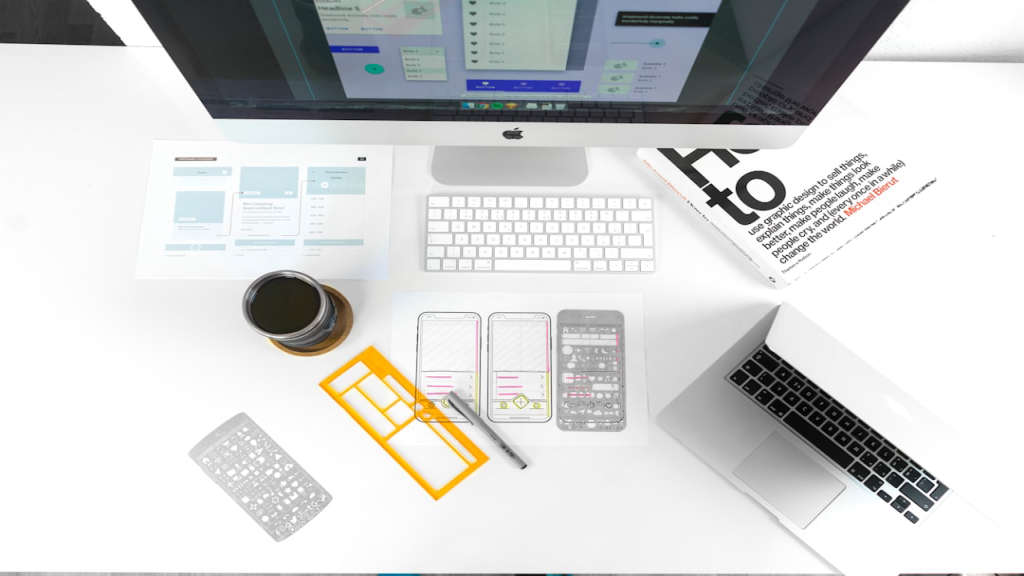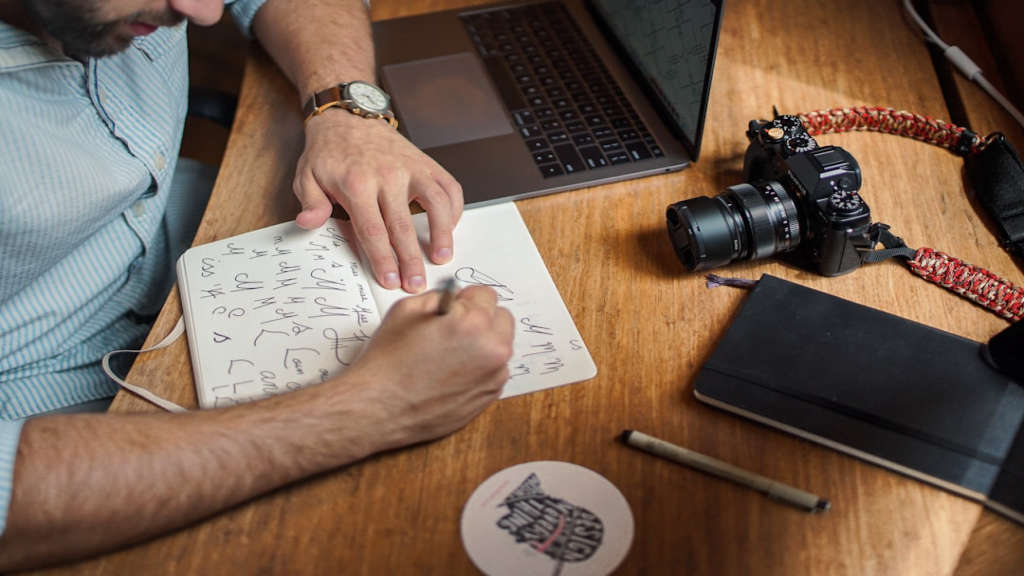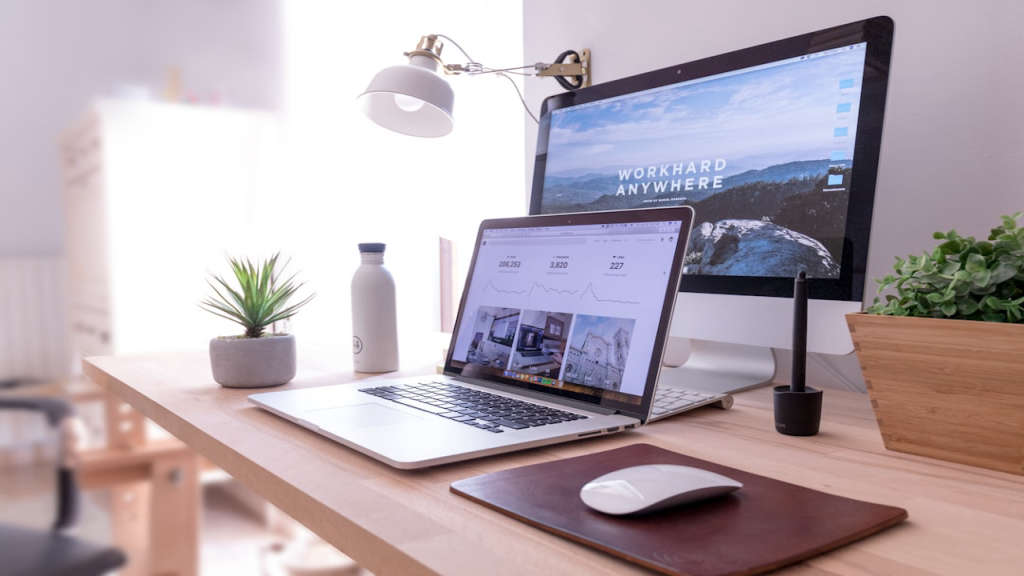
When it comes to creating interfaces that are clean, functional, and visually appealing, following minimalist design principles is key. By focusing on simplicity, clarity, and purpose, designers can craft user-friendly experiences that are both elegant and effective. In this article, we will explore seven essential minimalist design principles that will help you create interfaces that are both beautiful and user-friendly.
Main Points
- Simple is key when it comes to Minimalist Design Principles
- Avoid clutter and unnecessary elements for a clean interface
- Focus on functionality and usability
- Use white space strategically to create balance and emphasis
- Limit color palette for a cohesive and harmonious design
- Choose typography carefully for readability and visual hierarchy
- Emphasize user interactions and intuitive navigation

Simplicity in Design: The Key to Minimalist Interfaces
In the ever-evolving world of graphic design, simplicity has emerged as a powerful trend that is shaping the future of design. Minimalist interfaces are becoming more and more popular as designers embrace the idea that less is more. Simplicity, minimalism, and clean lines are the key elements that define this trend.
Why is simplicity in design important?
1. Enhanced User Experience: Minimalist interfaces focus on the essentials, making it easier for users to navigate and find what they are looking for. This results in a more intuitive and enjoyable experience for the user.
2. Improved Brand Perception: A simple and clean design conveys sophistication and elegance, which can enhance the perception of a brand and make it more memorable to customers.
3. Faster Loading Times: Simple designs with fewer elements load faster, which is crucial in today’s fast-paced digital world where users expect instant access to information.
How to achieve simplicity in design?
- Focus on the essentials: Identify the core elements that are necessary for the design and eliminate any unnecessary clutter.
- Use negative space: Embrace the power of negative space to create a sense of balance and harmony in the design.
- Stick to a limited color palette: Limiting the number of colors used in the design can create a cohesive and unified look.
- Choose readable fonts: Opt for simple and easy-to-read fonts to enhance the usability of the interface.
By embracing simplicity in design, designers can create minimalist interfaces that are not only visually appealing but also highly functional. The future of graphic design in 2024 is all about simplicity and minimalism, making it a trend that is here to stay.

Whitespace: The Silent Element That Speaks Volumes
Whitespace, also known as negative space, is often overlooked in design but plays a crucial role in conveying a message. It is the empty space that surrounds elements on a page and allows for better readability and aesthetics. Despite its subtlety, whitespace is a powerful tool that can communicate various meanings and evoke different emotions.
The Power of Whitespace
When used effectively, whitespace can enhance the overall user experience by creating a sense of balance and harmony. It can guide the reader’s eye towards important elements and help them navigate through the content with ease. In a world filled with distractions, whitespace provides a moment of pause and reflection.
Creating Visual Impact
By strategically incorporating whitespace into a design, you can draw attention to specific areas and make a statement without saying a word. The use of ample whitespace can give a sense of sophistication and elegance to a layout, while too little whitespace can make a design feel cluttered and chaotic.
Enhancing Clarity and Focus
Whitespace also plays a key role in improving readability and comprehension. By breaking up text with ample spacing, you can make information more digestible and engaging for the reader. This can lead to a better overall user experience and leave a lasting impression.
The Art of Balance
Finding the right balance between content and whitespace is essential in creating a visually appealing and effective design. Too much whitespace can make a design feel empty and lacking in substance, while too little can overwhelm the viewer. It’s a delicate dance that requires careful consideration and attention to detail.
| Whitespace | Design | Balance |
|---|---|---|
| is | an | essential |
| silent | element | in |
| speaks | volumes | design |
Whitespace is not just empty space; it is a silent communicator that speaks volumes. Its importance cannot be overstated, and its impact on design should not be underestimated. By embracing whitespace and understanding its power, you can create designs that are not only visually appealing but also highly effective in conveying your message.

Typography Choices for Clarity and Impact
When it comes to creating content, typography plays a crucial role in conveying your message effectively. The typography choices you make can greatly impact the clarity and impact of your text.
One of the most important factors to consider when choosing typography is readability. The font you choose should be easy to read, with clear distinctions between letters and spacing. This will ensure that readers can easily digest the information you are presenting.
Another key consideration is legibility. This refers to how easily individual letters can be distinguished from one another. Choosing a font that is highly legible will help to prevent any confusion or misinterpretation of your text.
Choosing the right font size and weight can also have a significant impact on the overall readability and legibility of your text.
Additionally, contrast is a crucial element to consider when selecting typography. The contrast between your text and background can greatly impact how easily your content can be read. It’s important to ensure that there is enough contrast to make your text stand out and be easily readable.
By carefully considering your typography choices, you can enhance the clarity and impact of your content, making it more engaging and effective for your audience.
Color Palette Selection: Less is More
In the world of design, choosing the right color palette can make or break a project. While it may be tempting to use a wide range of colors to make your design stand out, sometimes less is more. By carefully selecting a few key colors, you can create a cohesive and visually appealing look that will capture the attention of your audience.
Benefits of Using a Limited Color Palette:
- Harmony: By limiting the number of colors you use, you can create a sense of harmony and unity in your design. This can help create a more polished and professional look.
- Focus: Using a limited color palette can help draw attention to the most important elements of your design. By keeping the color scheme simple, you can ensure that your message is clear and easily understood.
- Memorability: A limited color palette can also make your design more memorable. By using just a few key colors, you can create a distinct and recognizable look that will stick in the minds of your audience.
When selecting a color palette, it’s important to consider the emotions and associations that different colors convey. Think about the mood you want to create and choose colors that reflect that feeling. Remember, less is often more when it comes to color selection. So, next time you’re designing a project, consider using a limited color palette to create a more impactful and cohesive design.
Purposeful Imagery: Enhancing Communication Through Visuals
Visual communication plays a crucial role in conveying messages effectively. By incorporating purposeful imagery into your content, you can enhance the impact of your communication and make it more engaging for your audience. Whether you are creating a presentation, designing a website, or crafting a social media post, the use of visuals can help grab the attention of your target audience and convey your message with clarity.
Why Visuals Matter
Visuals have the power to inspire, inform, and persuade in a way that words alone cannot. They can evoke emotions, create memorable experiences, and simplify complex information. In today’s fast-paced digital world, where attention spans are shorter than ever, using purposeful imagery is essential to cut through the noise and capture the interest of your audience.
When choosing visuals for your communication, it is important to consider the context, audience, and message you want to convey. A well-chosen image, infographic, or video can help you connect with your audience on a deeper level and leave a lasting impression. Whether you are telling a story, presenting data, or promoting a product, visuals can make your content more compelling and memorable.
How to Use Purposeful Imagery
When incorporating visuals into your communication, it is important to be intentional and strategic. Consider the tone, style, and relevance of the visuals you choose to ensure they enhance your message and align with your brand. Whether you opt for photography, illustrations, icons, or videos, make sure they complement your content and help reinforce your key points.
Experiment with different visual elements, such as color, typography, and composition, to create a cohesive and visually appealing design. Pay attention to details, such as image quality and resolution, to ensure your visuals look professional and polished. By investing time and effort into selecting and creating purposeful imagery, you can elevate your communication and make it more impactful.
In conclusion, purposeful imagery is a powerful tool for enhancing communication and connecting with your audience. By incorporating visuals that resonate with your audience and reinforce your message, you can create more engaging and impactful content. So next time you are crafting a message, remember the power of visuals and use them to enhance your communication effectively.
Consistent Interface Elements for Seamless User Experience
Creating a consistent user interface design is essential for providing a seamless user experience. When users interact with a website or an application, they expect to find familiar elements that help them navigate and interact with the interface easily. Consistency in interface elements not only enhances the usability of a product but also contributes to the overall user satisfaction.
One of the key aspects of a consistent user interface is the use of standardized elements such as buttons, menus, and forms. By maintaining a uniform design throughout the interface, users can easily recognize and understand how to interact with different parts of the product. Consistent design elements also help to establish a visual hierarchy and guide users’ attention to the most important information on the screen.
Benefits of Consistent Interface Elements:
| Enhanced Usability | Improved Brand Perception | Faster Learning Curve |
|---|---|---|
| Consistent interface elements make it easier for users to navigate and interact with the product, leading to a better overall user experience. | A cohesive and consistent design instills trust and confidence in users, enhancing the perceived value of the brand. | Familiar design patterns help users quickly understand how to use the product, reducing the time it takes to learn its features. |
“Consistency is one of the most powerful usability principles: when things always behave the same, users don’t have to worry about what will happen.” – Jakob Nielsen
By implementing consistent interface elements, designers can create a more intuitive and user-friendly experience that delights users and encourages engagement with the product. Consistency should be a key consideration in every design decision to ensure a cohesive and enjoyable user experience.
The Art of Decluttering: Streamlining Design Elements
Embracing minimalism in design has become a popular trend in recent years, with many embracing the art of decluttering to create spaces that are both visually appealing and functional. The key to successful decluttering lies in streamlining design elements to create a cohesive and harmonious aesthetic.
Key Principles of Decluttering:
- Simplicity: Simplifying design elements by removing unnecessary clutter can create a sense of calm and clarity in a space.
- Functionality: Ensuring that each design element serves a purpose and contributes to the overall functionality of the space is essential in decluttering.
- Balance: Striking a balance between different design elements such as color, texture, and form is crucial in creating a harmonious and visually pleasing space.
By following these key principles of decluttering, you can create a space that is not only aesthetically pleasing but also conducive to productivity and well-being. Embracing the art of decluttering can transform your space into a sanctuary of simplicity and elegance.
Conclusion
In conclusion, ‘undefined’ is a fascinating concept that challenges traditional design norms and opens up new possibilities for creativity. By embracing Minimalist Design Principles such as simplicity, functionality, and clarity, designers can create beautiful and innovative solutions that resonate with users on a deep level. This approach not only enhances the user experience but also brings a sense of calm and order to our increasingly complex digital world. As we continue to explore and push the boundaries of design, ‘undefined’ serves as a reminder that sometimes the most powerful designs are the ones that leave room for interpretation and personal meaning.
Frequently Asked Questions
What is minimalist design?
Minimalist design is a design approach that emphasizes simplicity and removing unnecessary elements to achieve a clean and functional aesthetic.
What are the key principles of minimalist design?
The key principles of minimalist design include using a limited color palette, minimalist typography, plenty of white space, and focusing on essential elements.
How can I implement minimalist design in my projects?
To implement minimalist design, focus on simplifying your designs, reducing clutter, using simple and clean layouts, and emphasizing functionality over decoration.
What are the benefits of minimalist design?
Benefits of minimalist design include improved usability, faster loading times, enhanced user experience, and a timeless and elegant aesthetic.
Are there any downsides to minimalist design?
While minimalist design is generally praised for its simplicity and effectiveness, some downsides include the risk of appearing boring or sterile if not executed thoughtfully.
